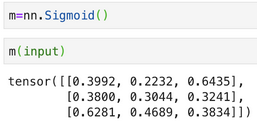YOLOV5代码理解 |
您所在的位置:网站首页 › 损失函数的计算公式 › YOLOV5代码理解 |
YOLOV5代码理解
|
YOLOV5代码理解——损失函数的计算
摘要: 神经网络的训练的主要流程包括图像输入神经网络, 得到模型的输出结果,计算模型的输出与真实值的损失, 计算损失值的梯度,最后用梯度下降算法更新模型参数。损失函数值的计算是非常关键的一个步骤。本博客将对yolov5损失值的计算过程代码的实现做简要的理解。 def compute_loss(p, targets, model): # predictions, targets, model device = targets.device lcls, lbox, lobj = torch.zeros(1, device=device), torch.zeros(1, device=device), torch.zeros(1, device=device) tcls, tbox, indices, anchors = build_targets(p, targets, model) # targets h = model.hyp # hyperparameters # Define criteria BCEcls = nn.BCEWithLogitsLoss(pos_weight=torch.Tensor([h['cls_pw']])).to(device) BCEobj = nn.BCEWithLogitsLoss(pos_weight=torch.Tensor([h['obj_pw']])).to(device) # Class label smoothing https://arxiv.org/pdf/1902.04103.pdf eqn 3 cp, cn = smooth_BCE(eps=0.0) # Focal loss g = h['fl_gamma'] # focal loss gamma if g > 0: BCEcls, BCEobj = FocalLoss(BCEcls, g), FocalLoss(BCEobj, g) 。。。。。。yolov5代码用IOU指标评价目标框和预测框的位置损失损失。yolov5代码用nn.BCEWithLogitsLoss或FocalLoss评价目标框和预测框的类损失和置信度损失 . yolov5代码用宽高比选择对应真实框的预测框,且每一个真实框对应三个预测框 。 1、位置损失yolov5代码用IOU值评价预测框和真实框的位置损失, 本文介绍CIoU指标. 公式如下截图: yolov5代码用nn.BCEWithLogitsLoss或FocalLoss评价目标框和预测框的类损失和置信度损失,本节一一介绍这两个损失函数。 nn.BCEWithLogitsLoss:首先对预测输出作sigmoid变换,然后求变换后的结果与真实值的二值交叉熵. 假设预测输出是3分类,预测输出: FocalLoss损失考虑的是:目标检测中正负样本严重不均衡的一种策略。该损失函数的设计思想类似于boosting,降低容易分类的样本对损失函数的影响,注重较难分类的样本的训练. 简而言之,FocalLoss更加关注的是比较难分的样本,何谓难分?若某一个真实类预测的概率只有0.2,我们认为它比较难分,相反若该真实类的预测概率是0.95,则容易分类. FocalLoss通过提高难分类别的损失函数来实现,公式如下: 为了能够平衡正负样本的重要性,我们可以给各个类别添加一个权重常数 α ,比如想使正样本初始权重为0.8,负样本就为0.2. 代码实现为: class FocalLoss(nn.Module): # Wraps focal loss around existing loss_fcn(), i.e. criteria = FocalLoss(nn.BCEWithLogitsLoss(), gamma=1.5) def __init__(self, loss_fcn, gamma=1.5, alpha=0.25): super(FocalLoss, self).__init__() self.loss_fcn = loss_fcn # must be nn.BCEWithLogitsLoss() self.gamma = gamma self.alpha = alpha self.reduction = loss_fcn.reduction self.loss_fcn.reduction = 'none' # required to apply FL to each element def forward(self, pred, true): loss = self.loss_fcn(pred, true) # p_t = torch.exp(-loss) # loss *= self.alpha * (1.000001 - p_t) ** self.gamma # non-zero power for gradient stability # TF implementation https://github.com/tensorflow/addons/blob/v0.7.1/tensorflow_addons/losses/focal_loss.py pred_prob = torch.sigmoid(pred) # prob from logits p_t = true * pred_prob + (1 - true) * (1 - pred_prob) alpha_factor = true * self.alpha + (1 - true) * (1 - self.alpha) modulating_factor = (1.0 - p_t) ** self.gamma loss *= alpha_factor * modulating_factor if self.reduction == 'mean': return loss.mean() elif self.reduction == 'sum': return loss.sum() else: # 'none' return loss其中成员函数loss_fcn为nn.BCEWithLogitsLoss。 |
【本文地址】
今日新闻 |
推荐新闻 |
 公式中参数代表的意义如下:
公式中参数代表的意义如下:  IOU: 预测框和真实框的叫并比 v是衡量长宽比一致性的参数,我们也可以定义为:
IOU: 预测框和真实框的叫并比 v是衡量长宽比一致性的参数,我们也可以定义为:  代码实现:
代码实现: 预测输出sigmoid变换:
预测输出sigmoid变换:  假设真实输出是:
假设真实输出是:  两者的二值交叉熵的计算方法:
两者的二值交叉熵的计算方法:  接口函数验证下上面的结果:
接口函数验证下上面的结果: 
 图像如下:
图像如下:  可以看出预测真实类概率越大,则损失函数越小,即实现了之前的想法.
可以看出预测真实类概率越大,则损失函数越小,即实现了之前的想法.